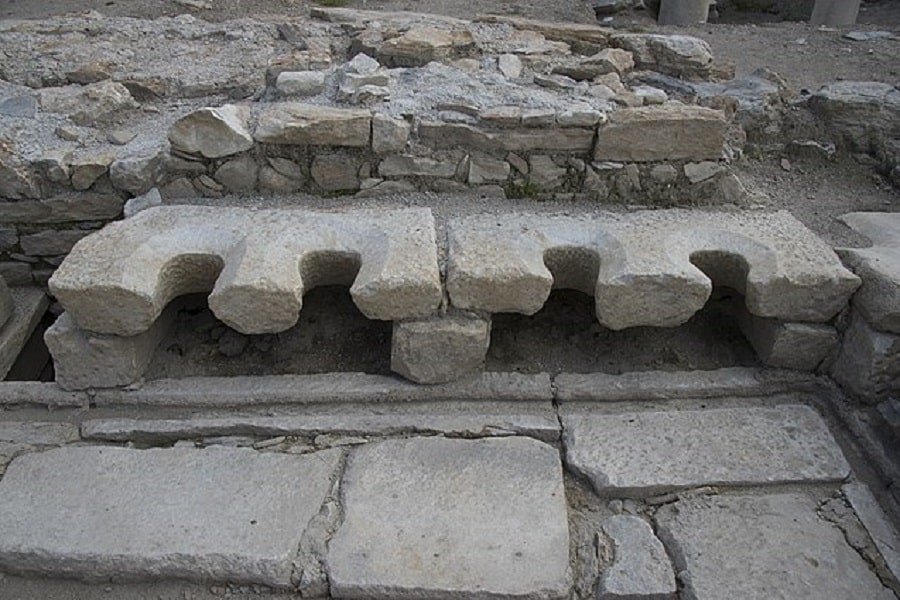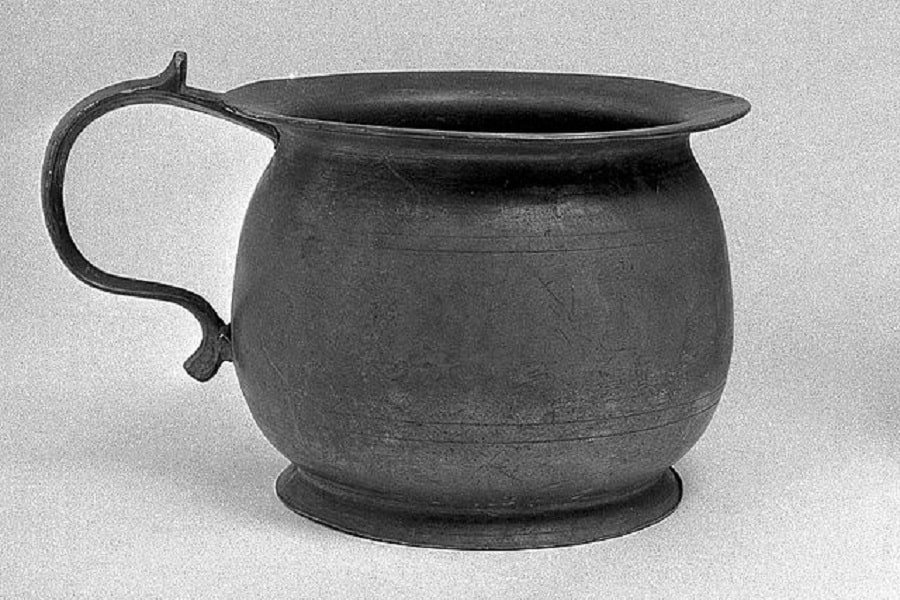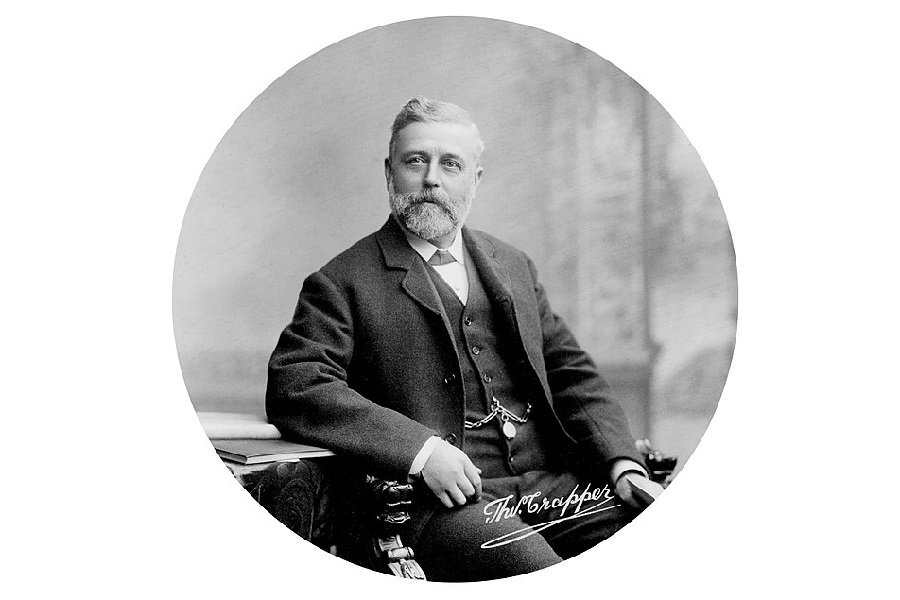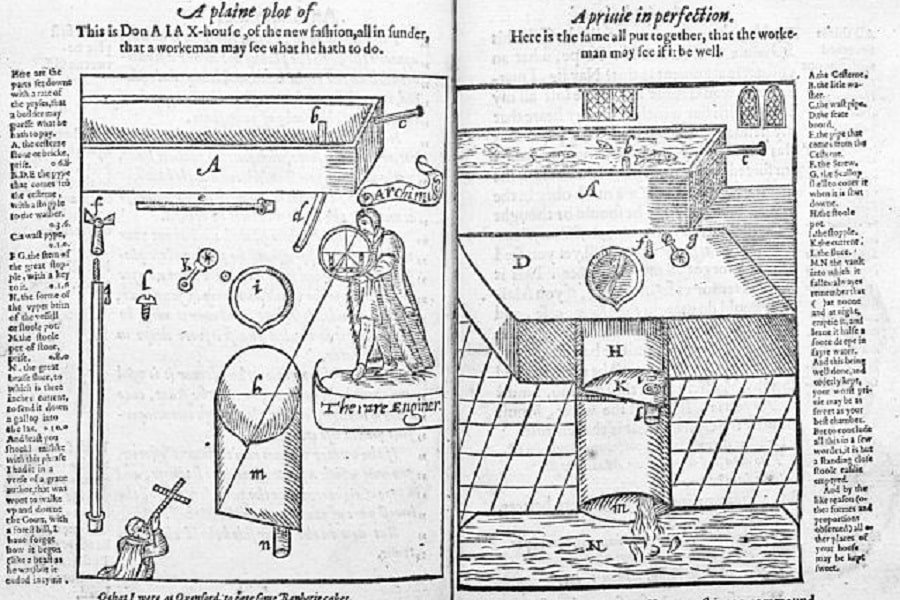The modern flush toilet, as we know it today, was not invented by a single individual but rather developed and improved upon by several inventors over time.
One of the early developments in toilet technology was made by Sir John Harington, an English courtier and writer, who designed a flushing water closet in the late 16th century. However, his design was not widely adopted.
The flushing toilet we are more familiar with today was popularized and refined by Alexander Cumming, a Scottish watchmaker, in the 18th century. He patented a design in 1775 that featured an S-shaped trap to prevent sewer gases from entering the bathroom. This design laid the foundation for modern flush toilets.
So, the invention of the toilet is a result of the cumulative efforts of various inventors and innovators over centuries, with contributions from different individuals at different times in history.
Table of Contents
Who Invented the Toilet? Archeologists and Pioneers of the Flushing Toilet
Although it might be something we see more than once a day, it is quite unclear who invented the flush toilet. While archaeological excavations might discover a hole in the ground that served as a toilet, determining whether it was possible to flush the toilet using sewer systems is a whole different beast.
For example, this becomes evident in the interpretation of an Italian excavator, who inspected a room under a Roman palace in 1913. His interpretation was that the elaborate mechanism of holes and waterways was there to provide power to the palace above. A century later, archeologists have some different views on this exact topic.

READ MORE: Roman Emperors
What Archeology Tells Us
Indeed, such excavations can be interpreted differently by different people. Yet, excavations and other ancient records are the most reliable sources to determine who invented the early toilets.
Archeologists help us draw the full picture, which also includes the habits of ancient societies. For example, researchers have inferred that Roman residents ventured into their toilets with some caution. It is believed that this was partly because of superstition, but also because of the very real dangers from rats and other vermin that moved through the sewers.
Investigations from archeologists have provided a new way to learn about the diets, diseases, or overall habits of past populations. This is especially true for the lower classes and middle-class homes, which gain more attention from scientists than the upper classes.
Pioneers of the Flushing Toilet
There are a couple of ancient civilizations that can claim to have pioneered the toilet as we know it today.
One of the pioneering communities on the road to the modern toilet is found in northwest India. Here, a 4000-year-old drainage system was uncovered.
Partly because it’s so old, it is hard to determine whether the toilets were flush toilets. Because scientists can’t say for sure whether they had a working model of a flushing toilet, we can’t give the Indian population all the credit just yet.
Therefore, the honor of producing the first toilet that can flush is usually given to either the Scots in 3000 BC or the Greeks around 1700 BC. That is not to say that they were the first, but just the ones that certainly used some form of the flush toilet.
One of the earliest examples of the modern toilet is found on the Island of Crete, in the palace of Knossos. The toilet used water to wash the waste into the palace sewer systems.

READ MORE: King Minos of Crete: The Father of The Minotaur
The Romans and Life Around Flush Toilets
The Greeks and the Romans influenced each other a lot. Therefore, the Romans also began building toilets. These mechanisms and systems were still very different from the ones we use today.
For example, privacy is taken for granted nowadays when we think about toilets. Both for public toilets and the modern flush toilets in our homes. However, the average Roman person might frown when seeing the amount of privacy we require for our trip to the toilet bowl.
In fact, by 315 AD, Rome had 144 public toilets. The Romans treated going to the toilet as a social event. Whether it was meeting friends, discussing politics, or talking about the news, the first public toilets were used for anything social.
The wiping, in case you were wondering, was done with a piece of sponge attached to a short wooden handle. After use, they would rinse it in the water channel that ran in front of the toilet.
READ MORE: Who Invented Water? History of the Water Molecule
Of course, the Romans were very aware of overconsumption and didn’t see any reason to ditch their sponge on a stick after use. They politely rinsed it and put it back for the next person.
While helping the Romans stay relatively hygienic, the wiping tool probably also inspired the saying ‘getting hold of the wrong end of the stick.’ It’s not difficult to see why that’s the case.

READ MORE: Ancient Civilizations Timeline: 16 Oldest Known Cultures From Around The World
Archeological Sites in Rome
Only quite recently, archeologists had an opportunity to inspect a high-ceilinged room under one of Rome’s grandest palaces. Inside the room, 50 holes the size of dinner plates ran along the walls. It was speculated that it had functioned as a toilet used by the lowest citizens of ancient Rome.
READ MORE: Ancient Cities: Pompeii, Rome, Teotihuacan, Palmyra, and More!
In 2014, the archeologists expected the site and speculated about the mysterious source of the water that would have flushed the sewer. Potentially, the water from nearby baths was used. The graffiti that was seen on the walls outside are interpreted as a sign of long queues. While waiting for their turn, people had enough time to write or carve their inspiring messages.
The Brits in the Middle Ages
If we want to see development as a timeline (always becoming ‘better’ and building on the previous), the Brits were severely behind in the Middle Ages when it comes to lavatories. Yet, the pathway of the Brits turns out to be the most influential when thinking about the contemporary flushing toilet.
Chamber Pots and Garderobes
The standards of the Brits weren’t very high when it comes to their toilet habits and hygiene. Most of the households used a chamber pot. A chamber pot, or potties, were simple metal or ceramic bowls used for relieving oneself.
The contents of the chamber pots were disposed of. When the chamber pots were introduced, there wasn’t yet any proper sewage system. Or, at least not in England during the Middle Ages. Therefore, people simply threw the contents out of the window. Mind your step, please.
The toilets in royal palaces, however, were a bit more hygienic and used a private garderobe: a protruding room with an opening for waste, suspended over a moat. These garderobes were private for the royals and affluent, but peasants and workers would use the huge public garderobe constructed in London.
The public wardrobes would empty the human waste directly into the River Thames, leading to a foul smell and disease spreading easily around the city of London.

From Garderobes to the Modern Flush Toilets
Eventually, the garderobes and public toilets were replaced by something called a commode. This is a huge step in our quest of who invented the toilet since they looked like contemporary toilets.
It was an actual box with a seat and a lid that covered the porcelain or copper pot. Although still using chamber pots, the toilet began to get its modern shape.
Although the Indians, Scots, Romans, and medieval Brits all had some form of sewage system, it is difficult to equal all of these ancient water closets and their sewerage systems with modern flushing toilets.
Toilet Slang and Ways of Saying
So, the question remains: who invented the toilet? Or rather, who invented the modern toilet?
The two persons most often credited as those who invented the toilet also influenced the way we talk about them. Many people believe that Thomas Crapper invented the first of many flush toilets. Indeed, his last name would become a cheeky way to talk about your number twos. But Thomas Crapper wasn’t the first one to design the toilet.

Why Is a Toilet Called a John?
The actual breakthrough in toilet technology came from Sir John Harrington. He made his appearance some 300 years before Thomas Crapper. Sir John Harrington is the godson of Elizabeth I and invented a water closet with a raised cistern and a small downpipe through which water ran to flush the waste.
Since Sir John designed the first flush toilet, British people often say they’re ‘going to the John.’ Indeed, this phrase can be directly linked back to the godson of Elizabeth I. The man who invented the toilet was a poet and author. His legacy, however, would rather be his work on the lavatory than it was the words he wrote down.
Although Sir John was the queen’s godson, he was banished from court for writing vulgar poetry. Because of this, he was in exile between 1584 and 1591 in Kelston, England. Here he built himself a house and, as suspected, the first flush toilet.
This first toilet, of course, needed a suiting name: Ajax. Do you think the football team from the Netherlands took into account the first modern flush toilet when finalizing their name?
The First Flush Toilet of Queen Elizabeth
After Sir John Harington was forgiven, he returned to his original place of residence. He was proud of his new toilet bowl and decided to show it to Queen Elizabeth Regina. She was quite impressed with the water closet, which was certainly the first modern toilet she’d seen. She decided that she wanted one of those toilets for herself.
The water closet that was designed for the Queen of England was a ceramic bowl with an opening at the bottom. Also, the bowl was sealed with a leather-faced valve and had a built-in system of handles, levers, and weights. This system was essential for the making of a more-than-normal water closet.
Although the Queen was enthusiastic, the public needed a little more convincing. A lot more. They preferred their water closets connected to the street drains or the River Thames.

Normalization of the Flush Toilet
As a capitalist society England was growing into, making money from these new water closets was a no-brainer. The best way to do so was to apply for patents. When you have a patent, other people using similar mechanisms as the ones you have patented will have to pay you for using them.
Of course, it made standard hygiene measures way more expensive. Luckily for everybody, good old Alexander Cummings didn’t care and proceeded with his patents. In 1775, Cummings had the first patent for a device similar to Sir John Harington’s Ajax.
The only difference between the two was that Cummings patented a toilet with an S-trap, or rather an S-shaped pipe. The invention of Sir John only had a straight pipe. The S-trap made sure the foul air wouldn’t be released from the toilet.
Thomas Crapper also played a role in the game of patents. While many think he is the first one to invent the flush toilet, this isn’t the case. He was just the first one to put them on display in a sink showroom, which he designed together with his contemporaries.
At one point, the UK decided that water closets were a necessity for everyone. It had taken about 250 years for the original water closet from Sir John Harington to become universal, even after approval from the ones living in Royal palaces.
The normalization of flush toilets was quite a necessity since up to 100 people shared a single toilet on the street. The sewage system wasn’t made for such capacities, so it spilled into the streets and the rivers.
While that’s already bad enough, it would eventually find its way back into the drinking water supply. Brown water wasn’t an appetizing sight, especially if you know that it got its color from human waste, horse manure, chemicals, and dead animals. Tens of thousands would die of water-borne diseases. One perfect example is the cholera outbreak of the 1830s and 1850s.

Night Soil Men
These outbreaks were partially the reason why the British government wanted a water closet in every home. However, these wouldn’t resemble the modern toilets that we know now. People could either have a water closet or an ash-pit privy. The latter had to be emptied, and the ones in charge of this mission were called the ‘Night Soil Men.’
Yet, there wasn’t even a proper sewage system in London to support the increase in toilets. Indeed, there were only open sewers. This was especially felt in the summer of 1858 when rotting sewage resulted in ‘the great stink.’ Even if you only saw the name, you wouldn’t want to be part of it.
After the summer of 1858, the government commissioned the building of the sewage system in London. The construction was completed in 1865, and a spectacular decrease in deaths from cholera, typhoid, and other waterborne diseases was noticed.
Modern Toilets
Bathroom technology would eventually reach the standards that we know today. The biggest steps towards these standards were made during the 20th century. Flushable valves, water tanks attached to the bowl, and toilet paper rolls came in this century.
READ MORE: When Was Toilet Paper Invented? The History of Toilet Paper
The US Energy Policy Act was also passed during this time. It required flush toilets to use only 1.6 gallons of water per flush. Nothing special at first sight, but this was a big move. Many producers began developing better, low-flush toilets to prevent clogging. This resulted in toilets and sewage systems becoming more effective and efficient.
Nowadays many toilets have automatic flushes, and some even compost the waste produced. This way, it can be used as a garden fertilizer. This, too, inspired many sustainable movements. On permaculture and other fully sustainable farms, you can often see some form of a compost toilet.

Health and Politics
It is unimaginable to simply ditch the toilets as we know them today. For one, because we are used to them. However, a more important reason is its role in health and health care.
As indicated earlier, the mandatory installment of private water closets and a well-working sewage system resulted in a vast decrease in diseases. Designing disease-prone water closets has always been one of the reasons why some forms of toilet would spread worldwide and some would not.
For example, although ancient Rome is famous for its sophisticated plumbing systems, modern studies show that these weren’t any good for the residents’ health. Also, studies show that around 75% of the population should have access to proper toilets before widespread improvements in health can be seen. Therefore, toilets can also be political.